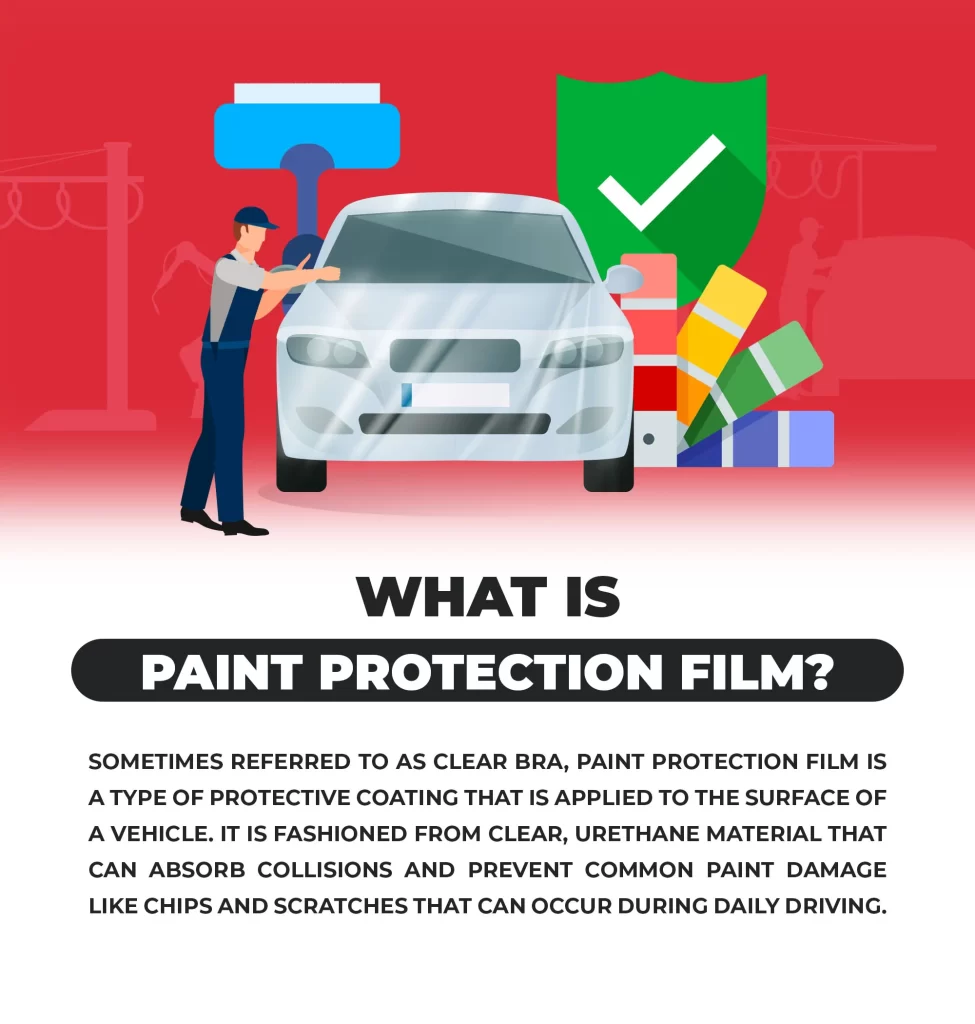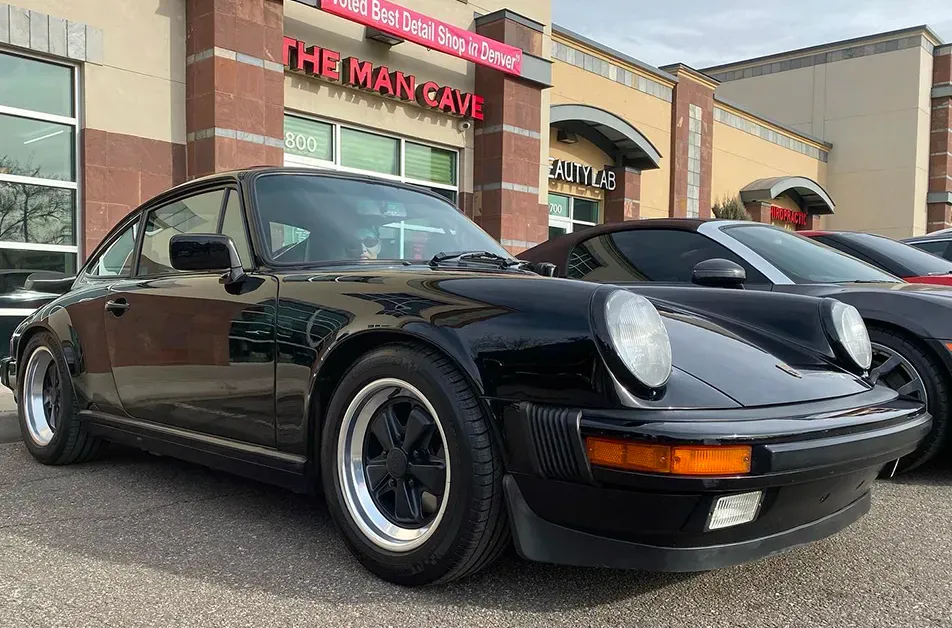Paint Protection Film, or PPF, is a transparent coating that is applied to a car’s exterior to provide an extra layer of protection against scratches, chips, and other types of body damage. PPF is made from a thermoplastic urethane material that is tough, durable, and resistant to the elements, making it an excellent choice for protecting your car’s paint. The film is custom-cut to fit the specific make and model of a given vehicle, ensuring a perfect fit that won’t interfere with the auto’s appearance or performance.
Paint protection film offers several benefits, including paint protection from damage caused by rocks, debris, and other road hazards. It can also help preserve the car’s resale value by keeping the exterior looking like new, even after years of use. Additionally, automotive PPF is easy to maintain and can be washed and waxed.
What is paint protection film?
Sometimes referred to as clear bra, paint protection film is a type of protective coating that is applied to the surface of a vehicle. It is fashioned from clear, urethane material that can absorb minor collisions and prevent common paint damage like chips and scratches that can occur during daily driving.
PPF is becoming a popular option for car owners who want to maintain the appearance and value of their autos. Additionally, it ensures effective vehicle protection against environmental factors, such as road debris, insects, and even ultraviolet rays.
How does paint protection film work?
Aside from the initial question: what is paint protection film, this is often the follow-up question. So, how does paint protection film work? Well, the way PPF works is relatively straightforward. It is applied to the surface of the car, usually in areas that are prone to damage, such as the front bumper, hood, and fenders. The film adheres to the surface of the vehicle, creating a protective barrier that absorbs impact and prevents damage from occurring.
PPF’s clear layer is tough enough to resist scratching, but soft enough to absorb collisions without cracking or peeling. It can also protect against UV rays, which can cause your car’s paint to fade or become discolored over time.
Paint Protection Film Types
What is paint protection film? It’s a car protective coating that comes in three different types. These include:
1. Entry Level
This type of paint protection film is the most affordable option for many car owners. It provides basic protection against scratches and small debris but doesn’t have any self-healing properties.
2. Self-Healing
This PPF type has a topcoat layer that can heal itself from minor scratches and swirl marks. It does this by using heat from the sun or warm water to activate its self-healing properties.
3. Instant Healing
Under this type of PPF, advanced polymer technology is used to instantly repair scratches, dings, and swirls that a car may have suffered from. This makes instant healing PPF the ideal option for car owners who are looking for maximum vehicle protection but with minimal maintenance requirements.
Does paint protection film work?
The answer is yes, PPFs work, and they are an effective way to protect your car’s paint from damage. However, there are a few things to consider before investing in paint protection film such as the following:
1. Cost
What is paint protection film? PPF is an advanced coating technology that also happens to be quite expensive. Thus, it’s important that you consider your budget first before deciding to get PPF for your vehicle.
2. Car Paint Type
Some car paint types, such as matte or satin finishes, may not be compatible with PPFs. Given this, you need to ensure that your car’s paint is compatible with paint protection film before applying the technology.
3. Car Plans
Many motorists often keep their vehicles for several years then sell them later to buy a new one. If you’re one of them, having paint protection film installed on your car is an effective means of increasing its resale value.
4. Maintenance
Proper maintenance is necessary to ensure that your PPF continues to provide optimal protection for your auto. This includes regular washing, waxing, and avoiding automatic car washes.
How long does PPF take to cure?
PPF installation typically takes several hours to complete. Once installed, it can take up to 24 hours for the film to cure fully and adhere to the car’s surface, depending on the temperature and humidity levels of the environment. During this time, it’s important that you avoid getting your auto washed or exposed to rain. Water can interfere with the film’s adhesion and compromise its protective qualities.
In short, it is recommended that any contact with your PPF is avoided during the curing period to ensure the film sets correctly and provides the best protection possible. It’s also essential that you follow any specific instructions provided by the manufacturer or the installer to ensure the longevity and effectiveness of the PPF.
Key Takeaway
Paint protection film is an excellent investment when it comes to protecting car paint from damage. With its durability, resistance to scratches, and self-healing properties, PPF can help keep your vehicle looking new for years to come.
As a car owner, you want to keep your automobile in pristine condition as much as possible, and PPF can provide this to you. But how does paint protection film work? The process is quite simple, but if you want the best results, an expert auto shop is what you should look for.
Paint success on your car with Man Cave Colorado’s paint protection film services.
Whether you’re looking to protect a brand-new car or preserve the appearance of an older vehicle, Man Cave Colorado is your all-in-one auto shop. Our services for paint protection film in Arvada, CO, is one of our prime offerings, and our dedicated team is ready to deliver this to you. We guarantee exceptional results that others can never match. Call us now.















